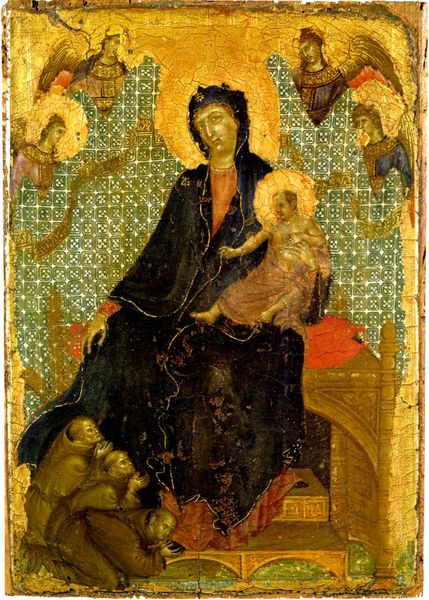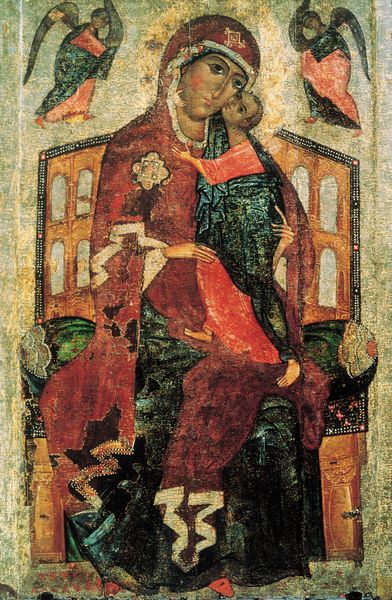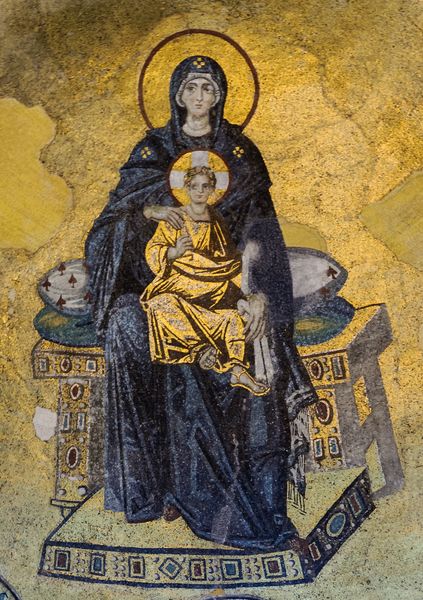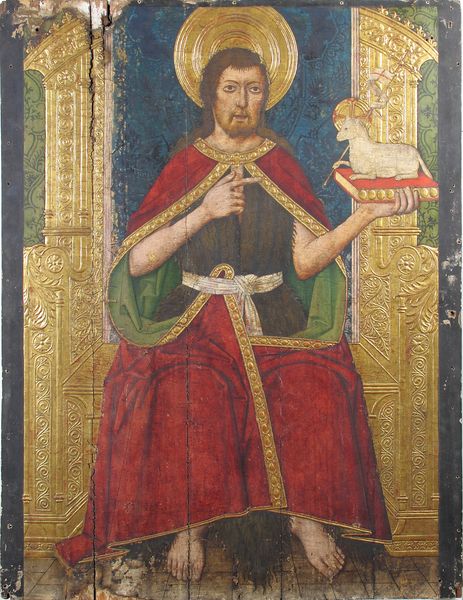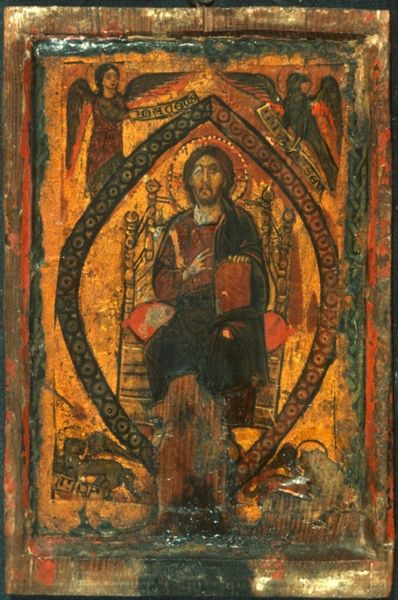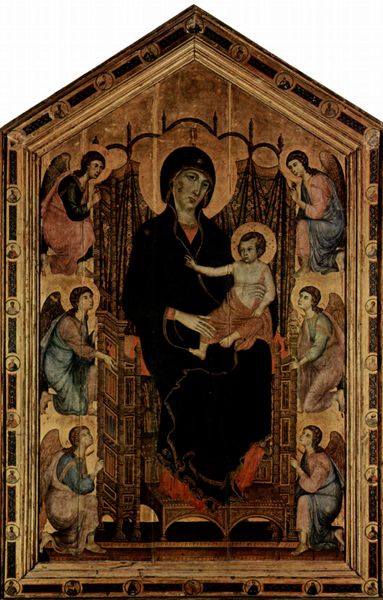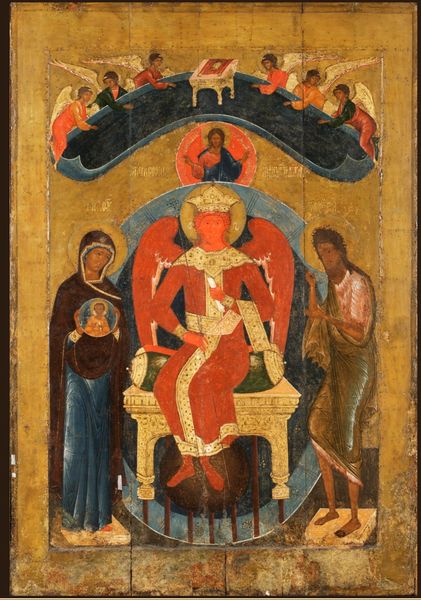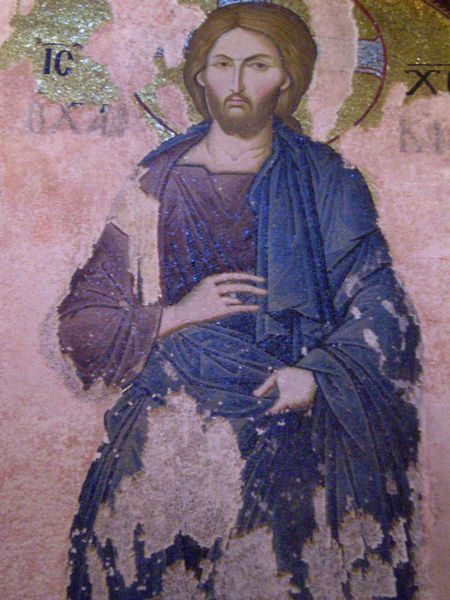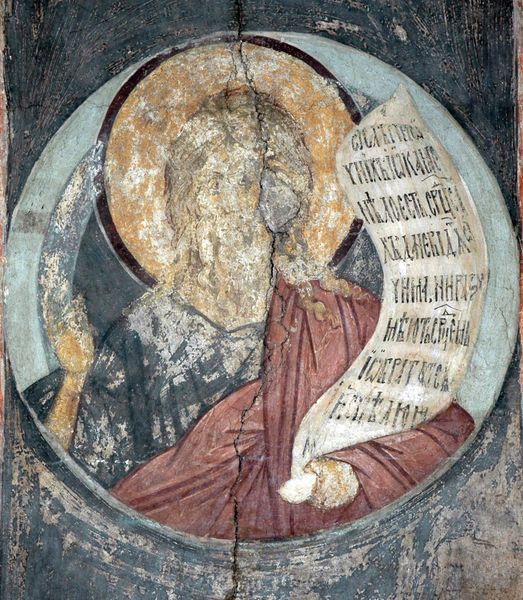
tempera, painting, oil-paint
#
portrait
#
medieval
#
tempera
#
painting
#
oil-paint
#
sienese-school
#
figuration
#
madonna
#
oil painting
#
child
#
underpainting
#
christianity
#
history-painting
#
italian-renaissance
#
angel
#
christ
Dimensions: 23.5 x 16 cm
Copyright: Public domain
Editor: Here we have Duccio's "Madonna of the Franciscans," created around 1300 using tempera. I’m struck by how the earthly figures of the monks at the bottom contrast with the ethereal angels surrounding Mary and the Christ Child. What does this painting say about the public role of religious art at the time? Curator: That's a perceptive observation! Consider the social and political climate of the late medieval period. The Franciscans were a rising power, advocating for poverty and a direct connection with the divine. How might a painting like this legitimize their role? Editor: So, commissioning a piece that visually elevates them, placing them literally at the foot of the Virgin, could be seen as a strategic move to solidify their spiritual authority? Curator: Precisely! Think about where this piece might have originally been displayed—likely in a church connected to the Franciscan order. The "Madonna" becomes not just an object of devotion but also a symbol of the Franciscans' access to divine grace. The symmetry and patterning also play a role in communicating these values of authority, purity, and order. Editor: I see what you mean. The repetition in the background pattern, the halos, and the mirroring angels definitely create that sense of order and heavenly authority. What do you make of the painting's current damaged state? Curator: The visible wear and tear offer an interesting layer of interpretation. It reminds us of the painting's material history, its survival through social upheavals, changes in taste, and institutional shifts. What does its survival tell us about the ongoing cultural power of this imagery? Editor: That’s a great point! Its endurance speaks volumes about the continuing influence of these religious narratives, despite all those changes. It makes you wonder how future generations will interpret these artworks based on our present societal context, too. Curator: Exactly. Every viewing is filtered through a new lens. It has been a delight discussing this painting with you.
Comments
No comments
Be the first to comment and join the conversation on the ultimate creative platform.
